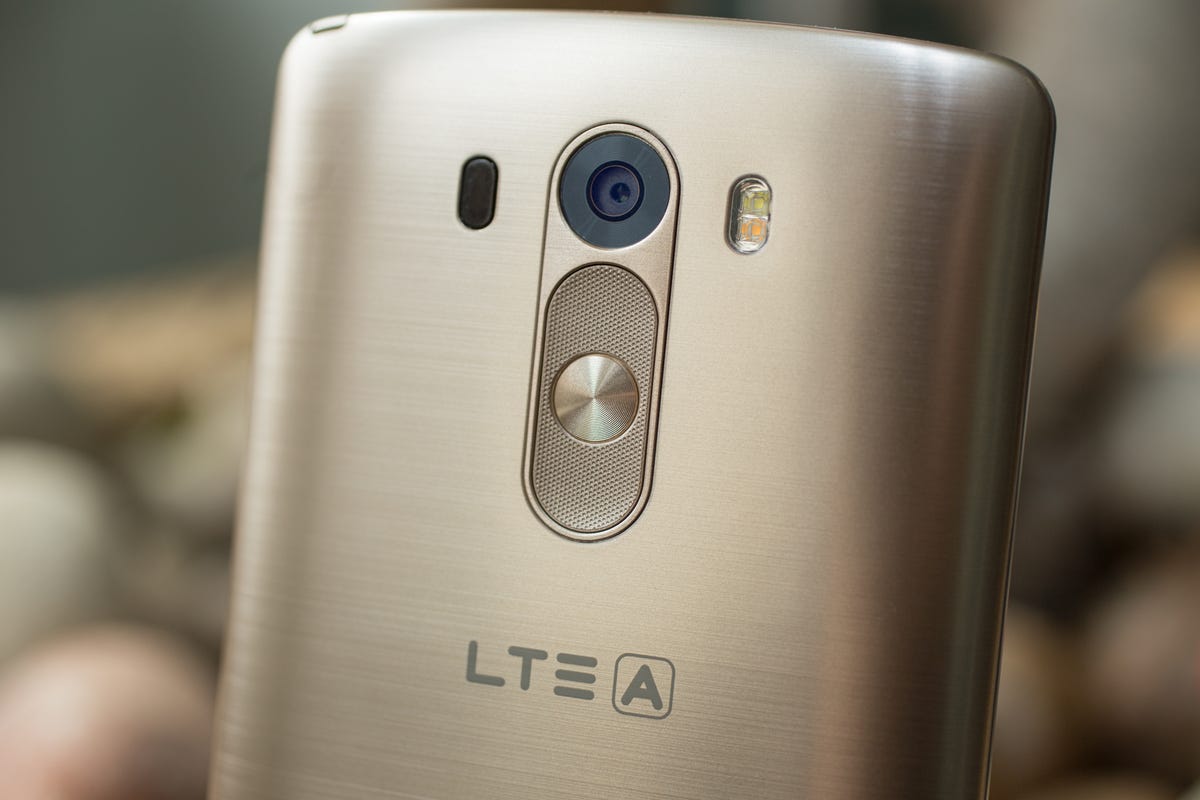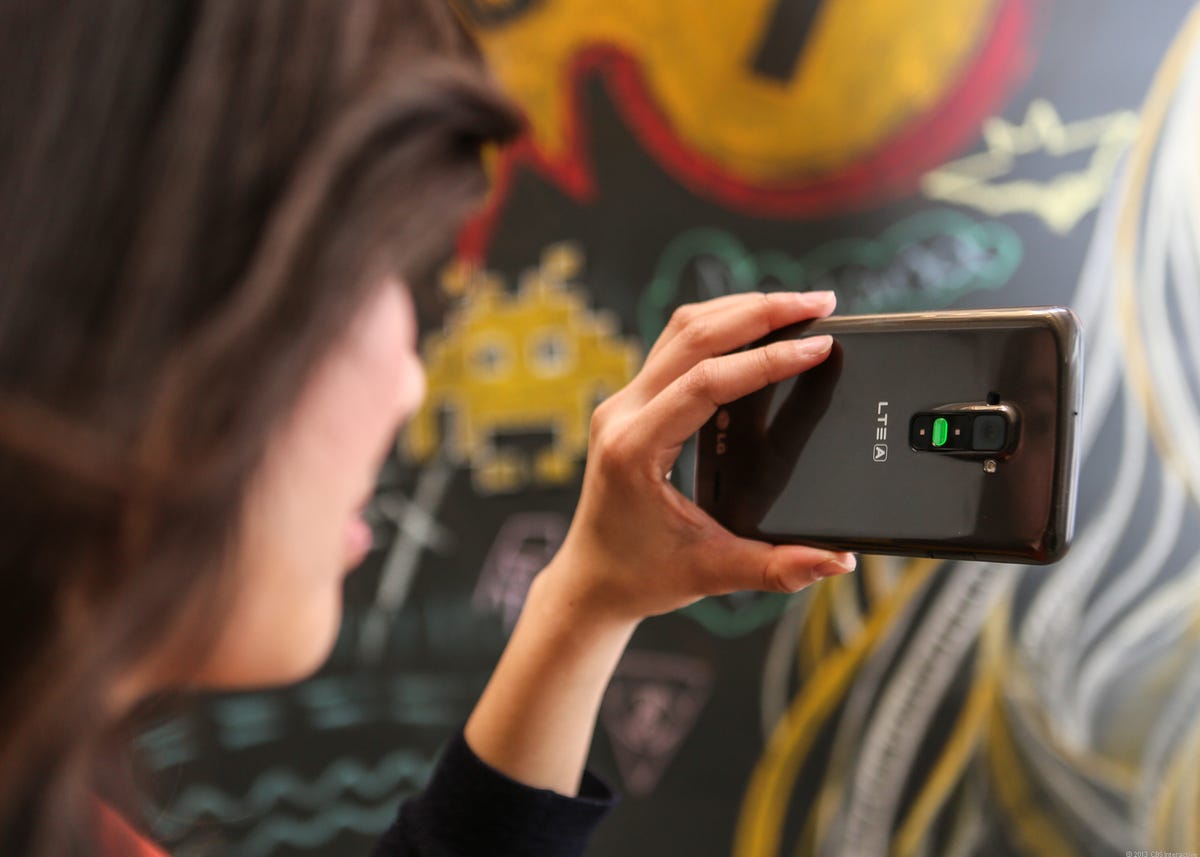
Andrew Hoyle/CNET
When LG unveiled its G2 marquee device last year, the Korean-based company emphasized that one of the handset’s main draws was its control buttons. Located on the phone’s backside, LG said the change in location, odd as it may seem, was actually much more comfortable and intuitive for users.
Related stories:
- Is the LG G3’s laser-equipped camera better than the Galaxy S5’s?
- How LG’s laser focus created the G3 super smartphone (Q&A)
- LG G3: How does that 1440p screen measure up against the Galaxy S5?
During my first few days while reviewing the phone, the new button location didn’t feel like much of a game-changer. At times, it even seemed like a slight inconvenience, since I would naturally hit the top or side edges of the device for the power button. Sure, the move was unique, but initially it seemed like a misguided design flop destined to disappear like the Motorola Atrix 4G’s rear key did.
More than just ‘quirky’
Cynics might be tempted to think that LG wanted to be different for the sake of being different, and that moving the control keys was simply a gimmick. This was partly confirmed when head of LG’s mobile platform planning Ramchan Woo told CNET back in March that the design initially caught his eye mostly because it was unique compared to the rest of the prototypes they considered.
However, Woo noted that there was also a real function to its form. And as I spent more time with the phone, as well as other LG devices with the same concept (more on them later), I began to notice more benefits. Adjusting the volume level during a call, for example, wouldn’t require feeling around the G2’s edges for the volume rocker. Instead, I can simply slide my finger to the center of its backside and change the volume without taking the device away from your face. Furthermore, my initial apprehensions about the number of times I would mistakenly smear the camera lens proved to be few and far between.


Josh Miller/CNET
By moving the buttons off the handset’s edges, Woo added, it enabled LG to design phones with ultrathin bezels. The G2’s bezel, for example, measures just 2.65 mm, and the G3’s is even smaller at 1.15mm. And when it comes to screen real estate, smartphone users know that bigger is indeed better.
LG also provided the buttons with secondary uses. You can long-press the volume-down button to launch the camera and the up button to open LG’s note-taking app, QuickMemo. When the camera is open, you can long-press the keys to start continuous shooting.
To prevent people from having to flip their G2s over every time they wanted to wake up their devices, LG developed KnockOn as well. With a quick double-tap of the screen, users can access the lockscreen. It was a simple solution to the most glaring problem that would have plagued the handset’s design.
But to fully endorse the concept of these rear buttons on the G2, LG had to keep the ball rolling. It’d need to redouble its efforts to further the buttons’ functionality and expand KnockCode’s usability.
Taking it to the next level
Enter the G Flex and G Pro 2 — top-tier devices that sported the same rear buttons as the G2. Both handsets introduced two essential features that signal to users of LG’s evolving and experimental use of these rear buttons.


Now playing:
Watch this:
Use Knock Code on the LG G Pro 2
1:49
On the G Flex, LG attached a small LED indicator to the center power key. Taking advantage of the selfie trend taking over smartphone photography, the light works in conjunction with the device’s 13-megapixel camera. When it senses a face somewhere in the frame, the light will glow yellow. When a face is locked in and focused, it will turn green, giving users the go-ahead to snap a clear portrait.
As for the G Pro 2, LG expanded on the KnockOn software feature and developed KnockCode. Now users can tap different areas of the screen in a customizable code pattern that will not only wake up the handset, but unlock it too. During our review, we said that KnockCode worked smoothly, as long as our taps were “distinct and timed with equal cadence.” And though it took a smidge longer to register than, say, a simple swipe unlock, it was convenient gesture to power on the display and unlock it at the same time.


Josh Miller/CNET
Committing to the cause
With the G3, the buttons do not include the LED light function that the G Flex offered, but they have all the other features seen earlier, including the long-press actions and KnockCode. The keys also went through a facelift: the center power key is now a circle instead of an oblong rectangle, and the volume rocker is more embedded than bulbous, making both of themthem look more natural and sleek.
More importantly, the fact that LG decided that the G3 would feature these keys again means it is fully committed to the design. During its launch, Woo told CNET that the company is willing to invest both time and effort toward the design, and that it has learned that, over time, people “grow to love it.”
Now that the device is set to launch globally in the next few weeks, LG better hope that new users grow to love the buttons, along with the rest of the handset as well. (And who knows? As the maker of the last two Nexus phones, LG may be installing it on Google’s beloved flagship, too.) For now it seems, the keys have firmly settled into their novel location, and they’re not budging.



